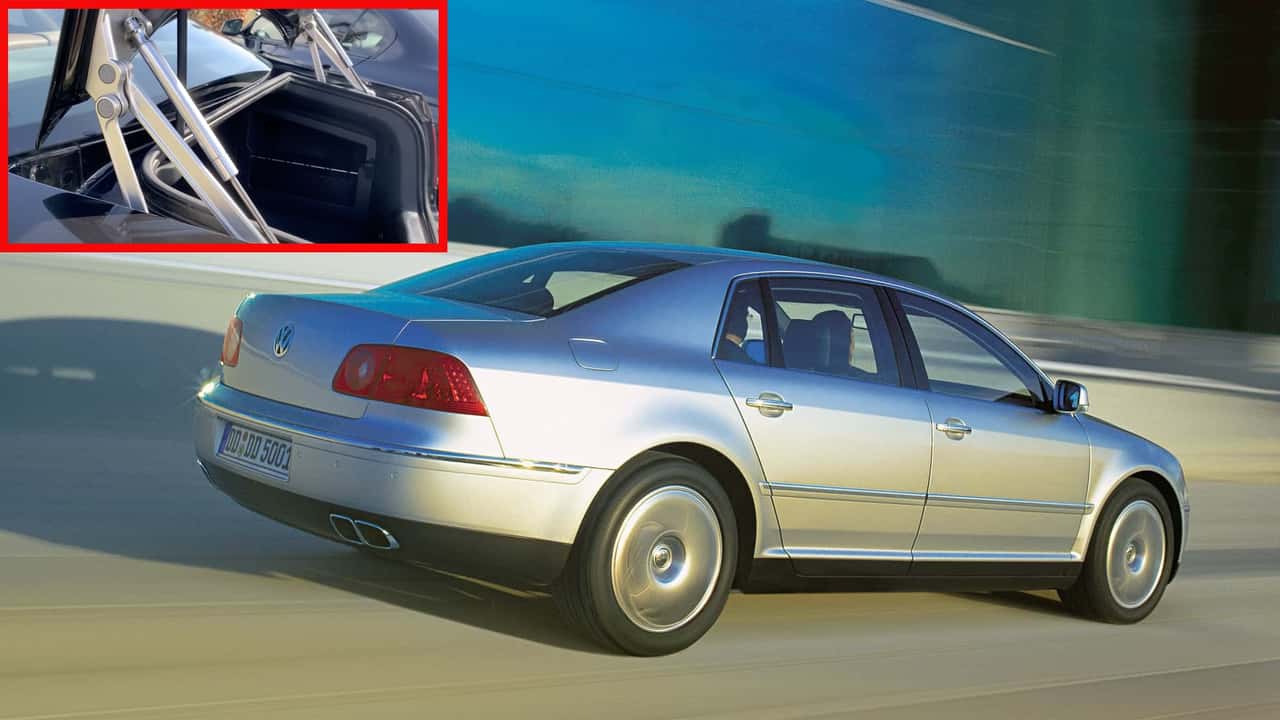
The Volkswagen Phaeton is a car you could never make again. It’s a product of a very specific time and place, and the vision of the late Ferdinand Piëch, grandson of Ferdinand Porsche, then chairman of VW, and a man with a flare for complicated engineering. This was a Volkswagen offered with both diesel V-10 and gas W-12 engine options. A Volkswagen that outdid Mercedes at its own game. And one with the most hilariously overcomplicated trunk mechanism.
An automatically opening and closing trunk isn’t a big deal now, and even when the Phaeton debuted in 2004, it wasn’t mind-blowing in and of itself. But, the way VW designed the Phaeton’s trunk mechanism was so over-the-top.
As my favorite YouTuber B Sport—a road- and race-car engineer and Phaeton owner—details in this video, the Phaeton had its own hydraulic system. An electro-mechanical pump in the right-hand side of the car actuates a hydraulic cylinder that’s connected to the hinges on either side. You don’t see any of the hydraulic system, but what you do see is the hinge mechanism, which is made up of forged aluminum arms and brackets. It’s a work of art in itself. There’s also a gas strut on either side because, well, of course there is.
And that’s not all! VW also designed a mechanism that retracts the lock behind a trim panel as the trunk opens, so you don’t bump up against it. Which, you know, happens all the time, right?
It’s a triumph of engineers over accountants, all in service of something that, sure, a customer will see, but probably won’t improve their life in any meaningful way. Simple electric motors will do the job, so why bother with all this?

Photo by: Volkswagen
On top of that, this crazy hydraulic system was only used on the Phaeton and its Bentley sibling, the Flying Spur. All that development money for a trunk mechanism on two cars.
Today, the Phaeton is an icon for its wild engineering. But it was a failure in its day. Turns out that even if you make the best car in the world but stick a VW badge on the grille, no one will buy it. It doesn’t matter that the Phaeton was better than a 7 Series or an S-Class. Luxury customers weren’t interested. And VW surely lost so much money on these things.
We’ll never see anything like this again. We’re past the point of the cost-no-object car, and while that might be for the better, it’s sad for the enthusiast. So we’ll look back on the Phaeton with admiration.
More on VW’s Golden Era
How Ferdinand Piëch Invented the Bugatti Veyron
This Engine Teardown Shows the Race Car Tech In VW’s Iconic Diesel V-10
